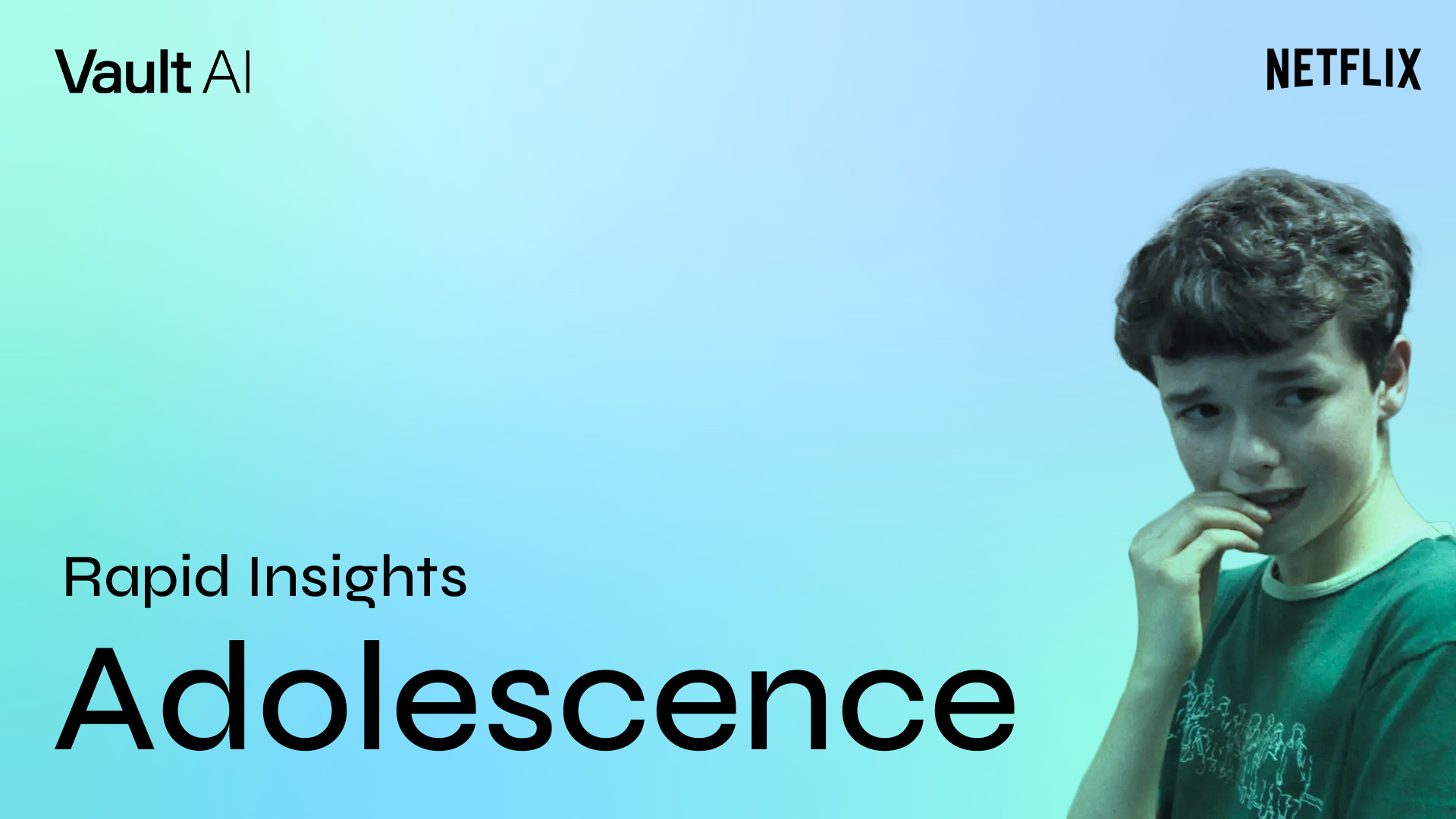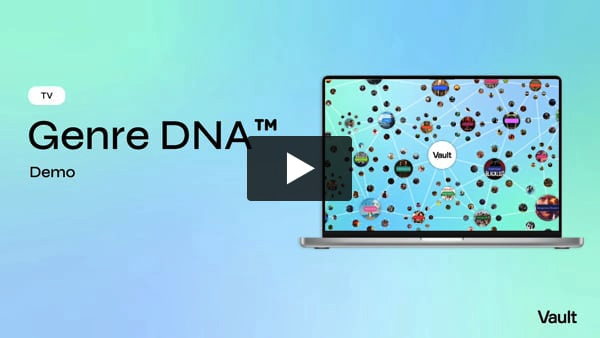Rapid Insights: ‘Adolescence’ Exposes New Dangers at the Crossroads of Family and Violence

Earlier this month, Netflix released a four-part limited series that hit a very topical nerve, and the show has skyrocketed to the top of the streamer’s charts by capturing a disturbing piece of the modern zeitgeist. The drama follows a 13-year-old boy suspected of killing a girl from his school after becoming immersed in Andrew Tate-like misogynistic ideas online.
Here’s what you need to know about Adolescence:
Vault AI uses index scores to describe the impact a given story/theme/element will have on specific KPIs:
≤79 Disappointing 80-89 Challenging 90-109 Average 110-119 Promising 120+ Outstanding
Who’s been watching this intense drama?
We’re seeing an audience that’s roughly gender-balanced (52% women / 48% men) and heavily skewed to those 30+ (73%). This represents a slightly different make-up than other dark dramas that explore similar territory, such as Defending Jacob, Unbelievable, and When They See Us, which are more likely to favor women (58-72%).
Why are viewers tuning in?
For the character drama. While Adolescence tackles a very broad and culturally relevant topic, it does so through the narrow lens of one 13-year-old boy and his family, and it’s these (fictional) character and story specifics that are actually pulling in audiences. The show’s exploration of the murder’s aftershocks feels compellingly deep: as the family crumbles (Broken Family, 118) and the despairing parents fear that they’ve utterly failed their son (Inner Conflict, 125), they nevertheless do everything in their power to defend him (Protective Parent, 117) and better understand his struggles (Teen Angst, 120). All are key ratings drivers.
What type of emotional experience are viewers signing on for?
A challenging one. The show centers the ideas of toxic masculinity and social media as poison, following their trajectory to a tragic yet logical conclusion as they become filtered through a young boy’s turmoil. Audiences are confronted by a whole host of negative emotions throughout the season, including Apprehension (121), Vigilance (118), Disgust (118), Loathing (116), Aggressiveness (115), Sadness (113), and Grief (113), as Adolescence makes clear that no one wins in this modern situation.
What’s making the series so bingeworthy?
Its exploration of the causes. Whereas what happens is driving ratings, why it happens is driving bingeability, and viewers are leaning forward to discern the complicated motives behind Adolescence’s classmate killing. Thirteen-year-old Jamie is a victim of Bullying (136) at school and at home, and his role model for masculinity is a quick-to-anger father who often explodes at the women in the family (Father-Child Relationships, 122). This, coupled with a failure to catch his slide into the disturbingly toxic “red pill” online community, leads his parents into a moment of crisis (Moral Dilemma, 129): is Jamie’s crime actually their fault?
How does the show’s social buzz look?
Through the roof. After the late-February trailer first spiked interest in the show (peaking at an “outstanding” 132), its full-season drop on March 13 immediately maxed out our social buzz meter (at 160), where it has remained firmly ever since. The series seems primed to stay top-of-mind for audiences for some time to come, as they text and tweet about the specifics of Jamie’s story and the terrifying questions it poses for society.
—
Most Popular Rapid Insights
Redefine your understanding of TV subgenres
Introducing Genre DNA™ – TV subgenres redefined by groundbreaking AI analysis to reveal the true drivers of viewership.
See the insights that others can’t
Genre DNA™ goes beyond traditional TV genre classifications by analyzing over 1,000 scripted and unscripted series on both linear and SVOD platforms from the last 5 years.
Each Vault Genre DNA™ report offers a precise analysis of your chosen TV subgenre, uncovering its unique drivers of viewership.
*Publicly released trailers for series are evaluated using Vault’s algorithms – utilizing our proprietary 120K+ story element database alongside viewership performance and other datasets – to identify unique combinations of stories, themes, characters, and genre elements that will drive success.
